Excellent. Thank you for this. My mom encourages me to spend more when something has better quality, but I have a hard time paying certain prices whether I can afford it or not. This helps me have a better eye and know when I need to and when I might actually like the lower priced item better. And everything in between!
I Compared Mass-Market and Luxury-Brand Clothes and Realized High Prices Don’t Always Guarantee Good Quality
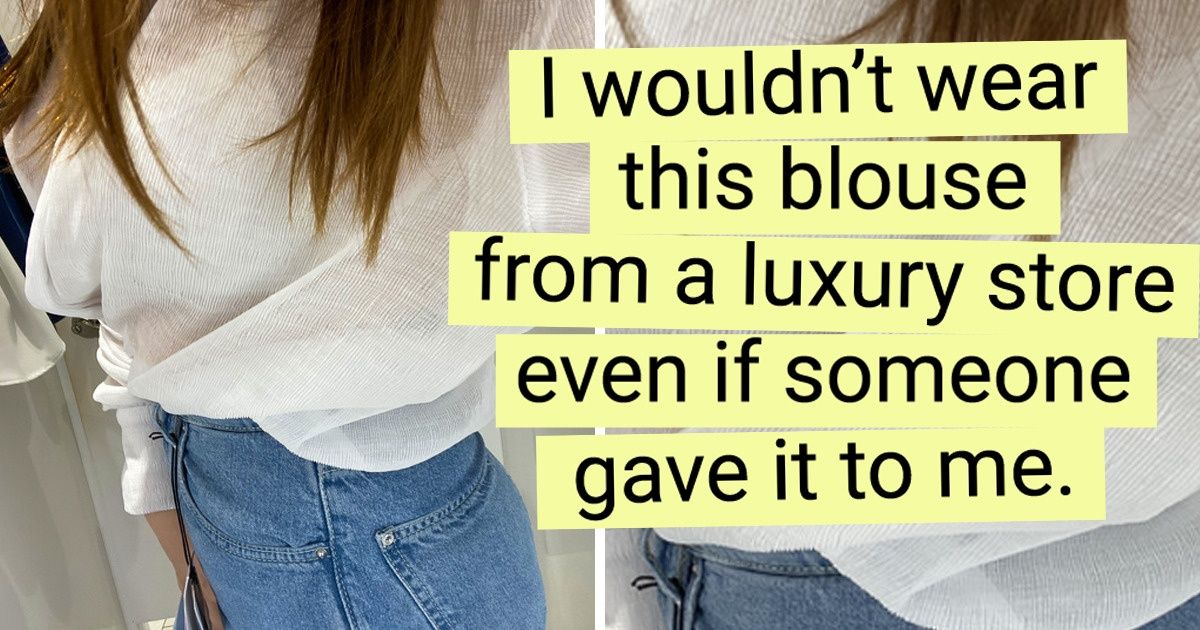
Commercials and society make us think that luxury-brand clothes, bags, and accessories are indicators of success. But the question about whether we should chase after brands is still up for debate. That’s why we decided to check and see if expensive things are better quality than mass-market clothes.
A Bright Side author spent several hours in the fitting rooms of clothing stores. She compared jeans, shirts, and other common items from 2 segments: budget and luxury. All the photos are taken on the phone and the quality of the pics mainly depends on the lighting in the fitting rooms. That’s why we have also added the author’s subjective feelings to the photo comparisons. By the way, the results impressed the author too. The bonus part will tell you how different the fitting rooms and service between these 2 types of stores are.
Jeans
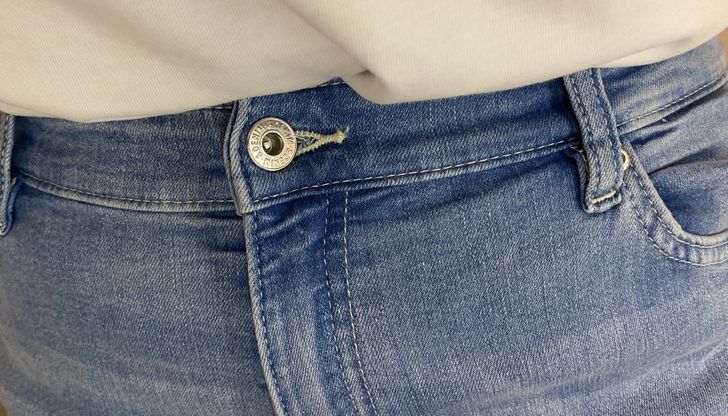
The race to fitting rooms started from choosing one of the most popular clothing items — jeans. To keep the experiment pure, I tried on several budget options and several expensive ones. The first impression was the following: I don’t understand why anyone needs to overpay by 10 times for jeans from luxury stores.
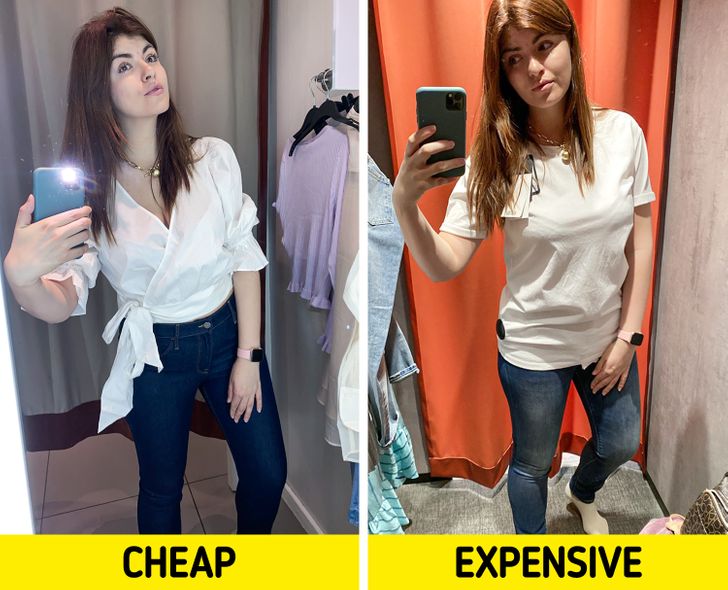
Jeans from budget-friendly stores look just as good as the models that cost $200 and more. After having examined the quality closer, I was reassured of my opinion once again. Seams, fittings, fabric — after having checked these details, I can’t say that mass-market automatically loses. It’s not possible to determine whether you are dealing with expensive or cheap goods. Jeans for $20 made in Bangladesh were made neater and didn’t have protruding threads unlike a model for $200 made in Tunisia. This means that jeans, which cost 10 times more, are not always better than cheap ones.
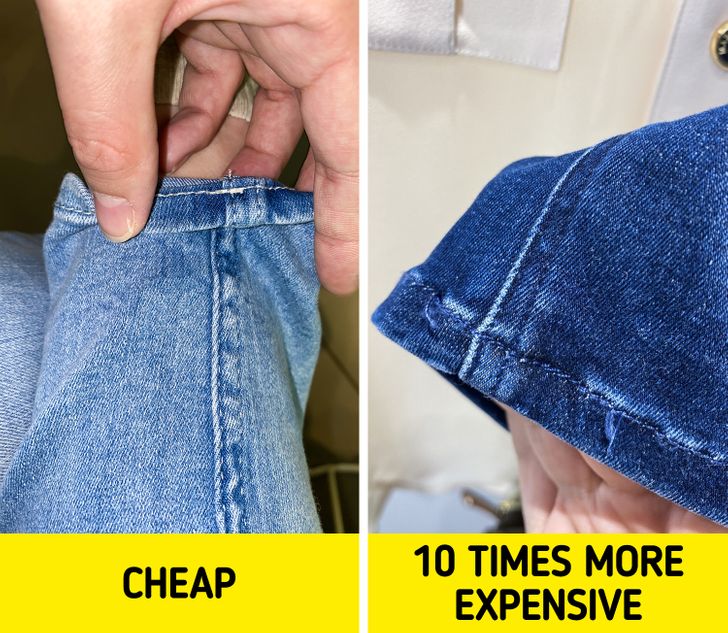
It’s worth noting that the jeans that cost more had design inserts and details that visually made the item look more interesting.
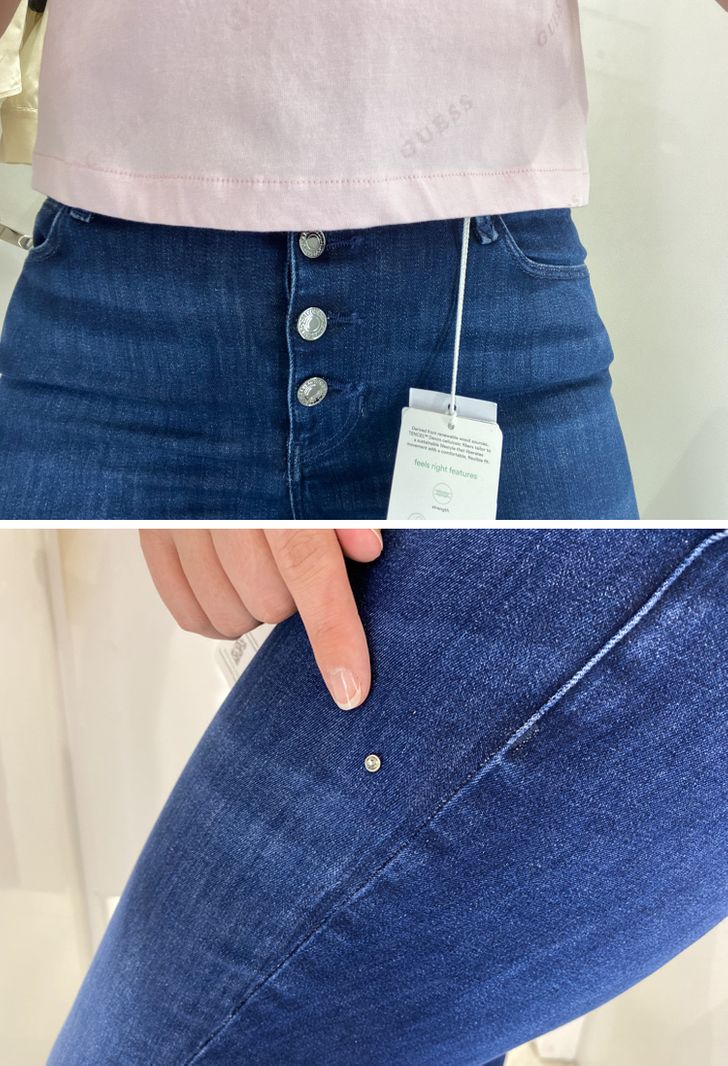
Shirts and blouses
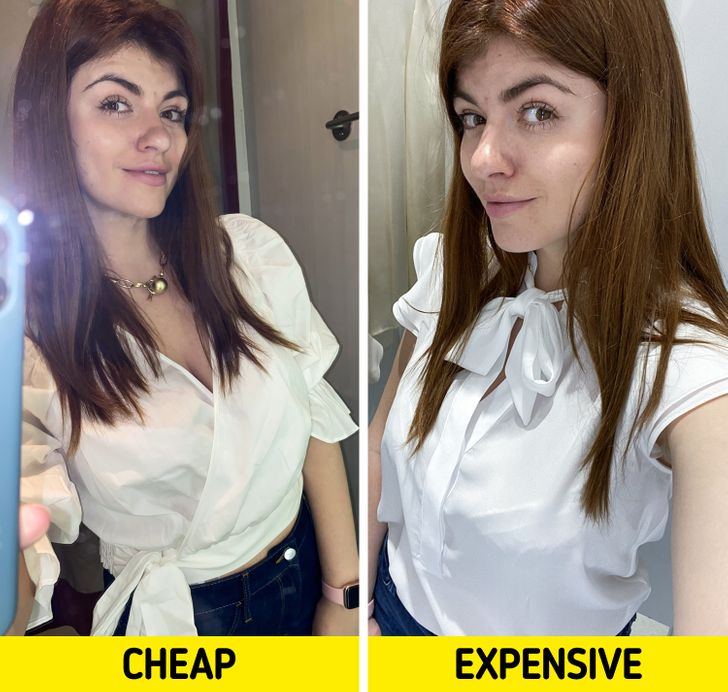
I was able to find many decent items for good prices among budget brands. The quality of the fabric they were made from turned out to be good. At least, it was nice for the body to the touch.
I tried on a couple of blouses made of polyester from the premium segment and I got surprised at how different the same material can be. For example, I wouldn’t wear this blouse from a luxury store even if someone gave it to me — the fabric that this was made from, for $150, was so unpleasant to the touch.
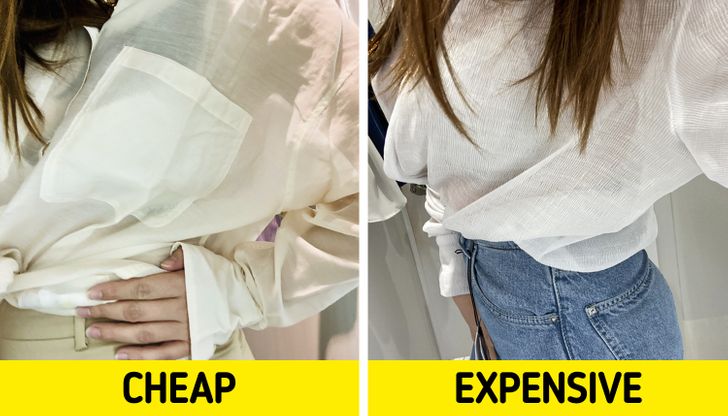
At the same time, the same store was offering a similar item in a different style (also made of polyester) for $175, which contacted the body nicely, as if it were made of silk.
As I was trying on one of the inexpensive shirts, its button fell off. This has happened to me many times before when I was clothes shopping. Unfortunately, oftentimes, things from this segment have unreliably sewn buttons and other small details.
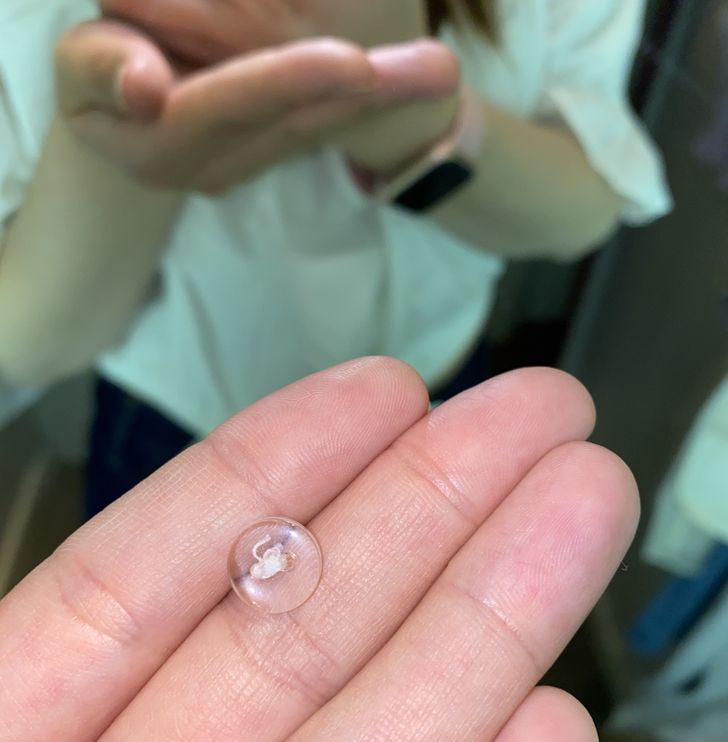
I looked closer at the quality of the seams on the sleeves. Generally, things that I tried on were made without any defects but still, I could see protruding threads on these clothes regardless of their price. However, there were exceptions as well. For example, I didn’t find any threads on an expensive silk shirt.
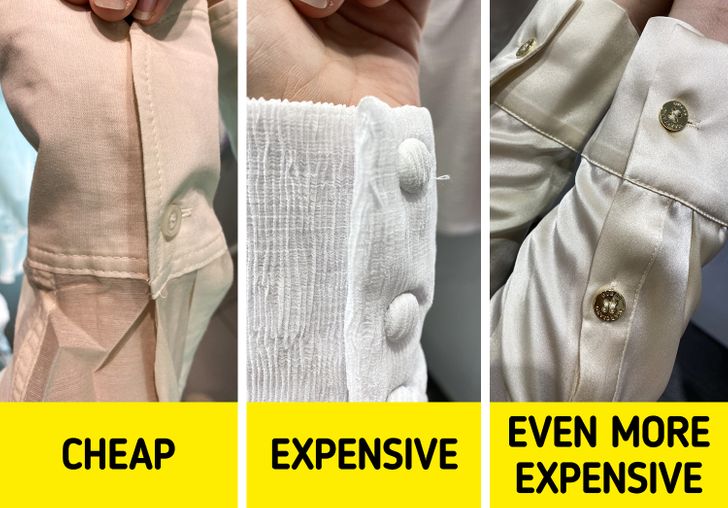
In stores that catered to a more expensive segment, I found items made of materials that were not there in the mass market stores. For example, a blouse made from natural linen for $250 as well as a linen shirt for $185.
By the way, linen is a very expensive textile. It is hard to grow and it is quite difficult to work with linen threads. Compared to cotton, linen dries faster and absorbs moisture, that’s why it is more valuable in hot weather.
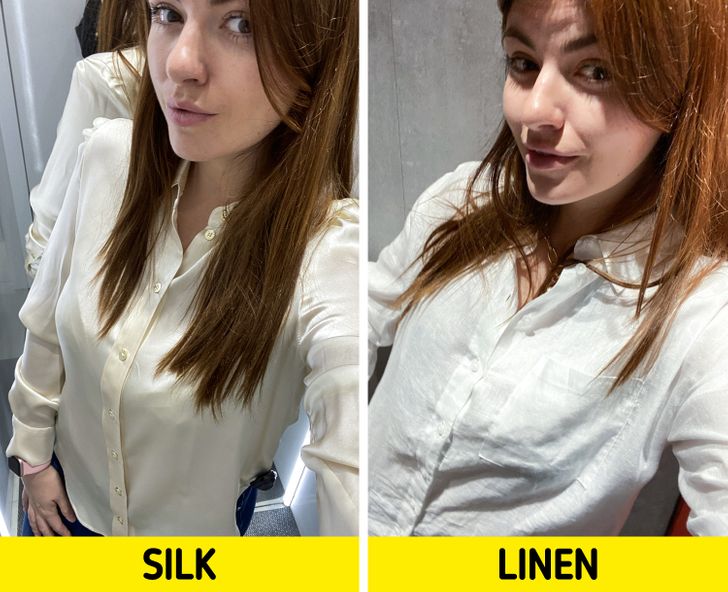
Dresses
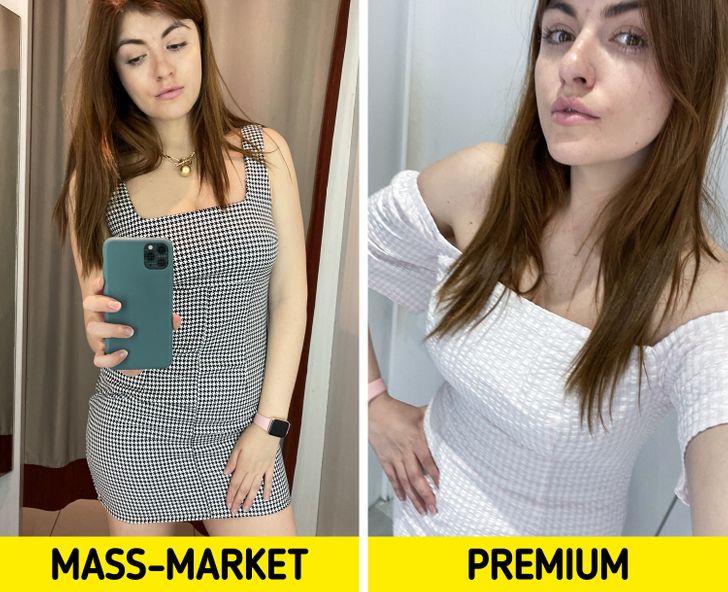
Each segment is abundant when it comes to any type of dress. For the experiment, I opted for 2 models at different price points. I didn’t like either option of these short dresses — they were both uncomfortable to wear because of the fabric. But I liked the more expensive dress because of the small nice details: an accurate hook fastener that wouldn’t allow the zipper to go down and a ribbon sewn on the inside of the item, which kept the off-the-shoulder part of the dress from slipping down.
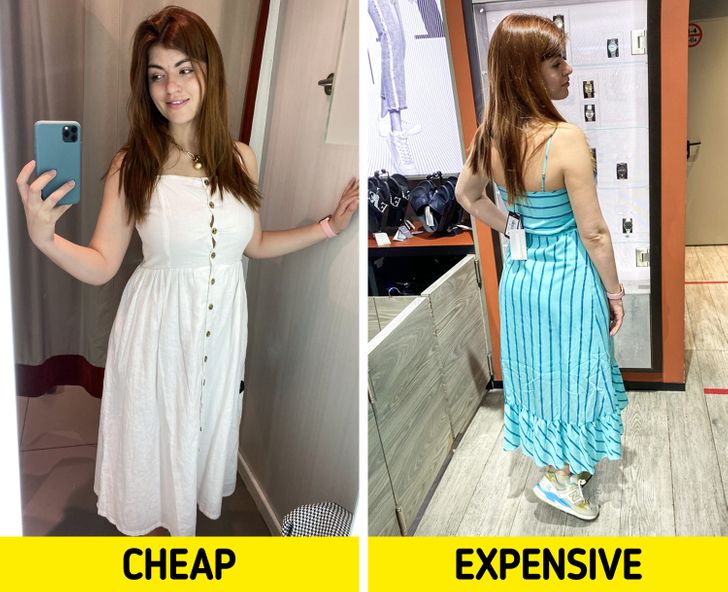
The long white dress from the mass-market retailer seemed nice to me. But if compared with the turquoise premium segment model for several hundred bucks, the first one was far behind. I could feel the difference in the fabric: the white dress was rougher and the turquoise dress was flowing and caressing my skin with its silky touch.
T-shirts
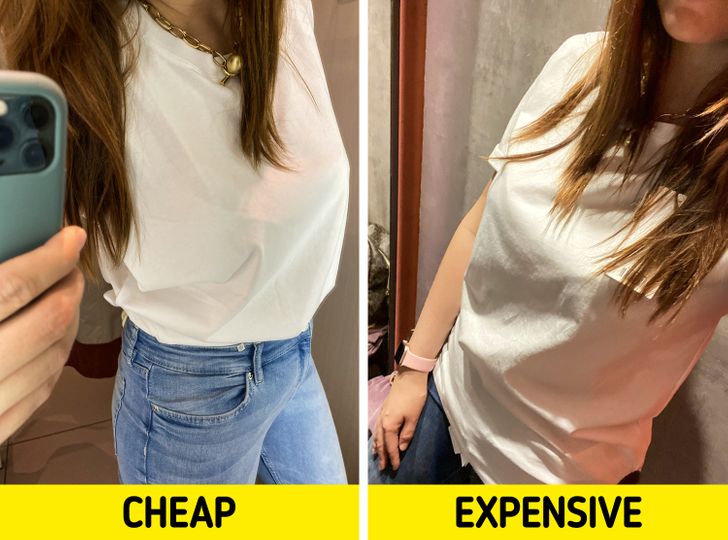
When comparing 2 regular T-shirts, which were 10-times different in price, I came to the conclusion that there was no significant difference between them. I even liked the T-shirt for less than $10 because of its style. By the way, when I turned the item inside out, I was surprised by the quality of their seams.
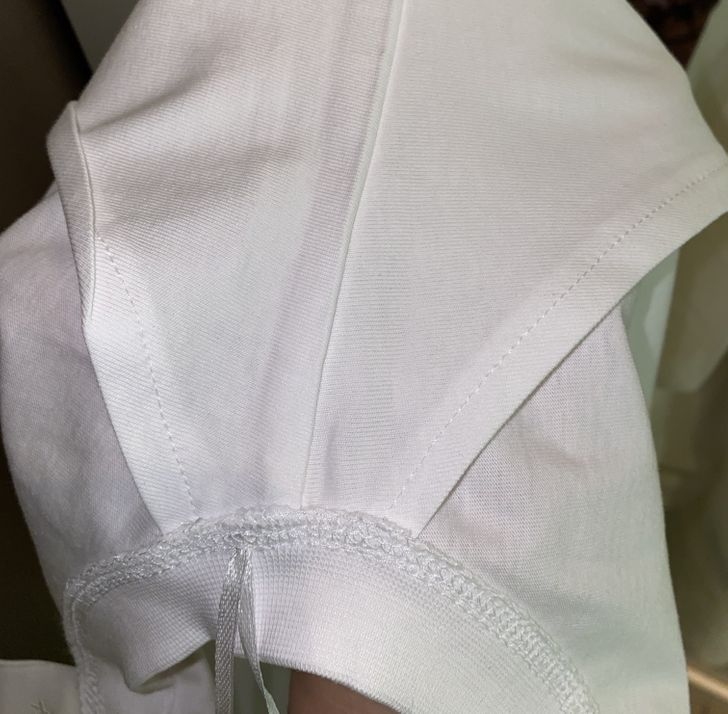
Skirts
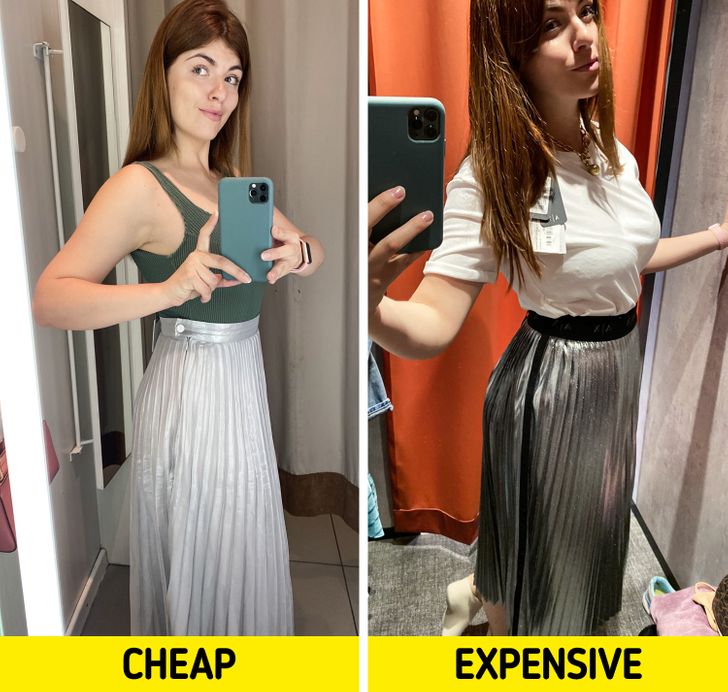
Both pleated skirts looked decent. Though the mass-market item lost because of its quality: the fabric was rough, which didn’t create the feeling of the material being flowy.
Hats
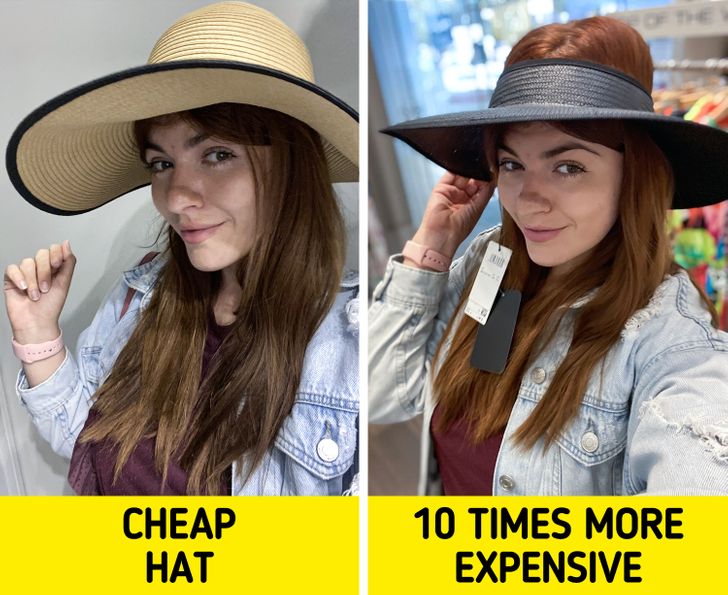
I didn’t feel any difference in quality or in comfort, although the black hat cost 10 times more. However, I didn’t find a model with a cut-off top in the mass-market store. It’s probably there in some stores — I just need to look closer.
Accessories
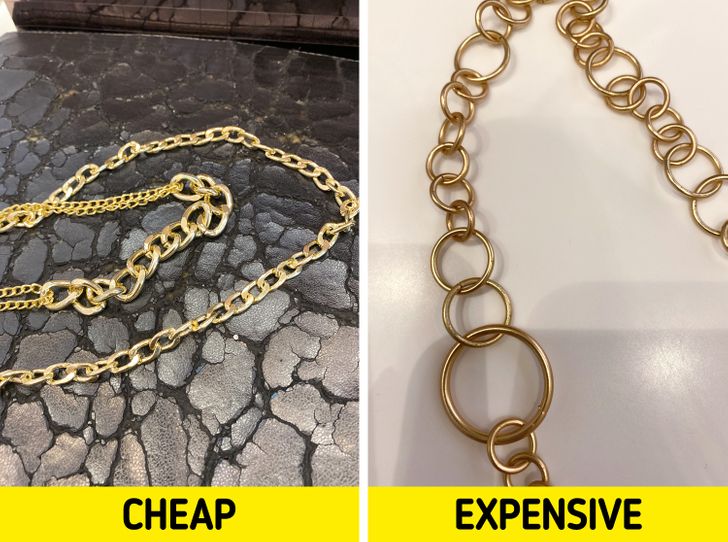
According to the shop assistant, the budget metal chain can discolor or shed if it gets wet or if I spray perfume on it. The other chain for several hundred dollars (according to the shop assistant) from a premium segment store is made of a jewelry alloy and its coating won’t shed. At the same time, the shop assistant couldn’t explain what type of alloy it was nor could she explain why the item had some scuffs, when examined closer.
Bags
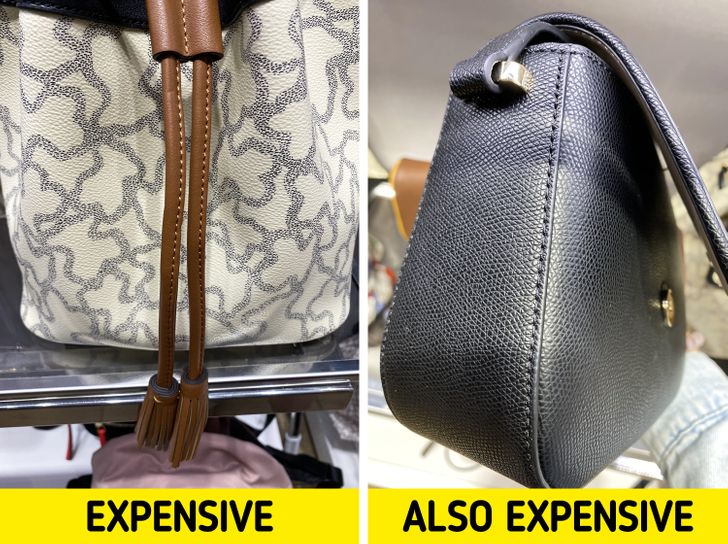
To compare, I opted for 2 polyurethane and PVC bags in a store that had prices that are above average and budget bags made from polyurethane. Polyurethane is a more costly material compared to polyester because it is more resistant and more flexible.
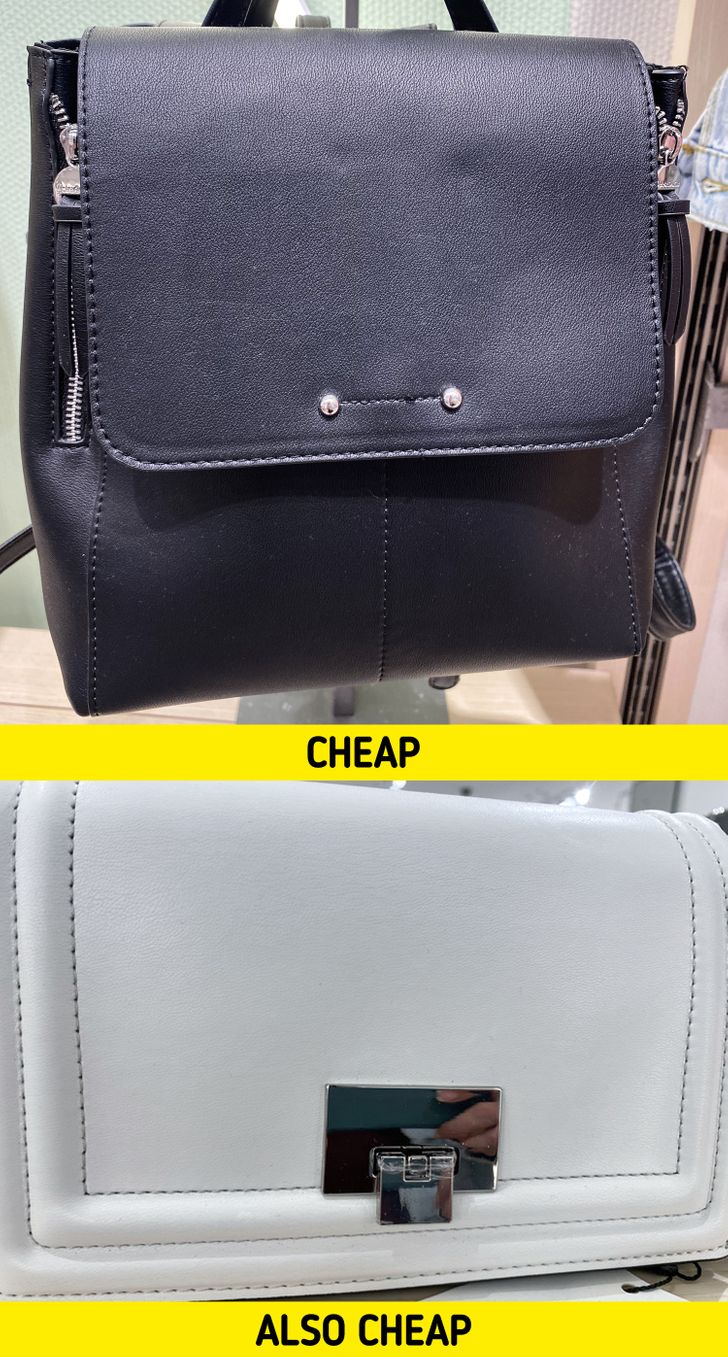
Even visually, polyurethane bags seem more reliable and durable. Apart from the material itself, mass-market lost on the quality of the items in general. The handles of a backpack had already started to tear off on the shelf, while a handbag turned out to not be sewn well from the inside: the metal details were not straight and there were many threads protruding from the seam. Premium sector bags didn’t have these defects.
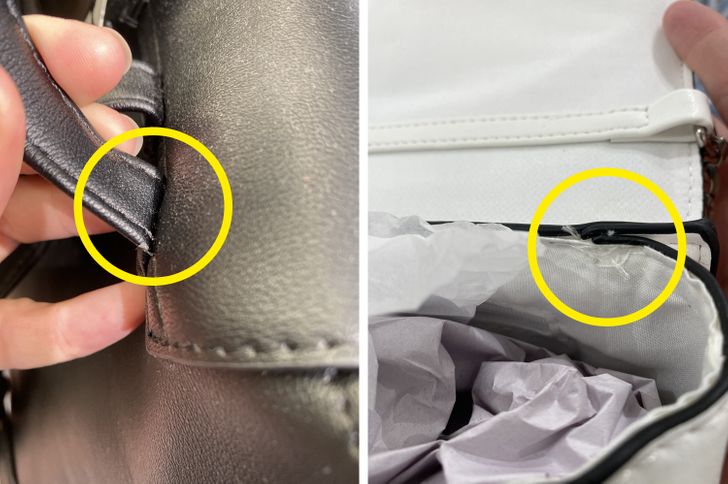
Denim jackets
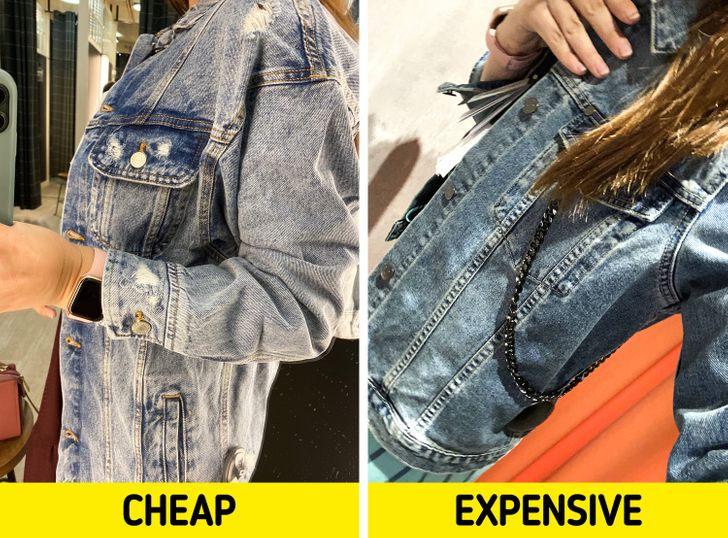
These 2 jeans jackets were made well, they fit the body perfectly, and didn’t have any obvious defects. The significant difference could be seen only in the price and in the presence of a chain on the luxury-brand item.
Summer blazers
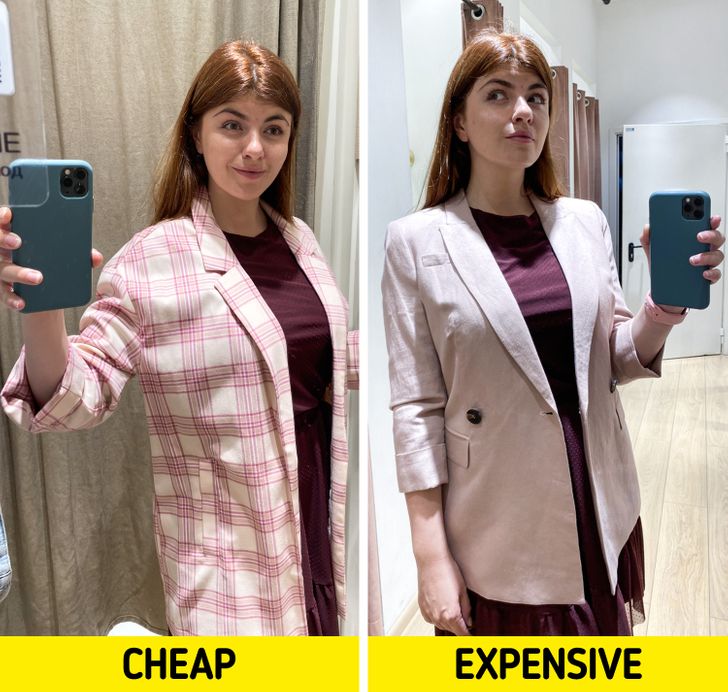
It’s worth noting that the price of these items depended on their material. The composition of both goods had viscose but the more expensive blazer was partially made of linen, while the cheaper one had polyester as another fiber component. By the way, polyester reminded me about itself right in the fitting room: I started to feel hot in the checkered blazer, feeling like I had to take it off as soon as possible. Also, this wardrobe item annoyed me with its seams and quality: threads were protruding and the fabric started to fall apart before a purchase was even made.
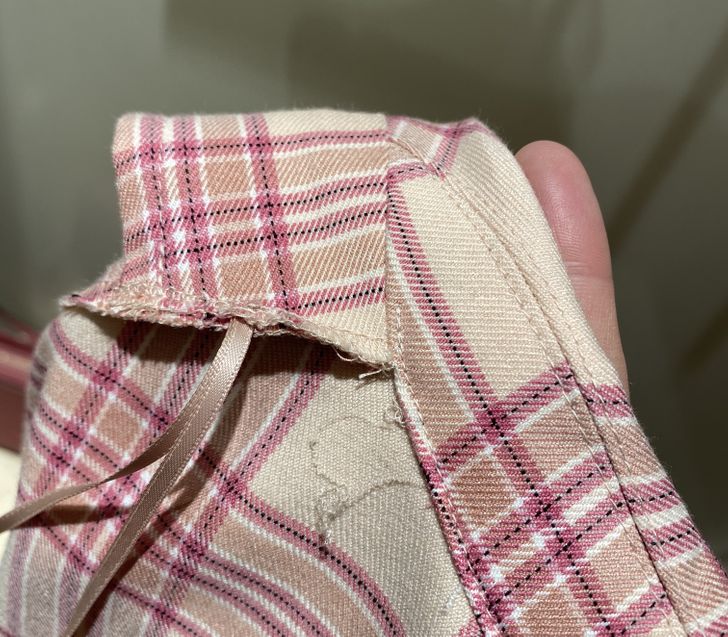
Bonus: Fitting rooms and service
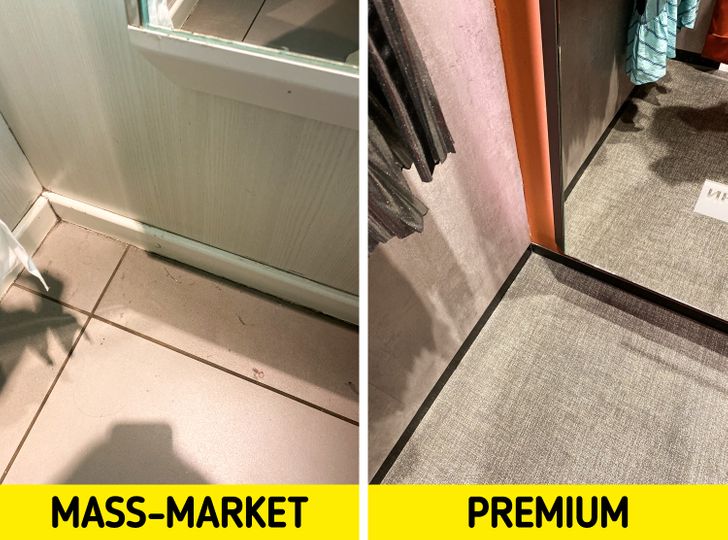
Now I would like to share the photos of the fitting rooms with you. In luxury stores, fitting rooms were sometimes too small, inconvenient, and poorly lit, but they were never dirty unlike the fitting rooms in cheaper stores. Frankly speaking, sometimes it was uncomfortable to take off my shoes on the dirty floor in mass-market fitting rooms.
All in all, we definitely overpay for service at premium-segment stores. In one budget shop assistants persistently asked to hang the tried-on items back on the hangers and return the goods taken to the fitting room. The shop assistants in luxury stores, in their turn, didn’t have these requests and even gladly asked to take a pic of me. Also, they didn’t hesitate to clarify whether the items fit me and whether I’d like to try on different items to compare.
Perhaps there is no point in overpaying and chasing after brands. Sometimes the premium segment loses to mass-market because an expensive item, for several hundred dollars, can be made of fabric that is unpleasant to the touch and uncomfortable to wear. Or what’s more, it can have protruding threads. There are plenty of these clothes in budget stores and they are much cheaper. Of course, you won’t be able to find the courteous staff, who are ready to help you find the right size, but at least you can find good-quality inexpensive things and not overpay for the service.
In your opinion, are clothes from expensive brands worth the money they cost? Why do you think people buy regular super-expensive T-shirts?
Comments
I hate buying clothes in the stores because the light in all the fitting rooms makes me look very nice, but as soon as I come home and try the item again, I look differently
I also notice girls wear something from lux brands but the clothes look so bad, the fashion is weird
Related Reads
20+ Photos Proving That Vintage Things Can Be Way Cooler Than Modern Items
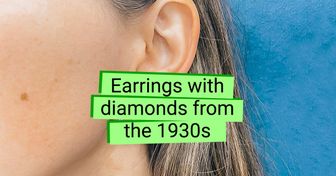
15 Stories About People Who Made Decisions That Can’t Be Logically Explained

15+ People Dared to Transform Their Eyebrows and Were Astonished With the Results

15+ Brides Who Dared to Choose a Very Unusual Outfit for Their Wedding and Stunned Everyone

18 Girls That Were Blessed With the Best Mothers-in-Law Ever

20+ People Tried on Clothes From Previous Generations, and They Look Insanely Cute

20+ Photos That Prove the Clock Is Ticking for Everything

18 Employees Who Saw Their Choices Backfire Hard

My MIL Mocked Me at My Husband’s Birthday Party—I Gave Her a Brutal Reality Check

10 Honest Stories That Capture the Struggles and Pain of Blended Families

My MIL Moved in ‘for an Emergency’—Now She Refuses to Leave

I Refuse to See My Stepfather Again After He Tried to Cancel My Mom’s Savings
